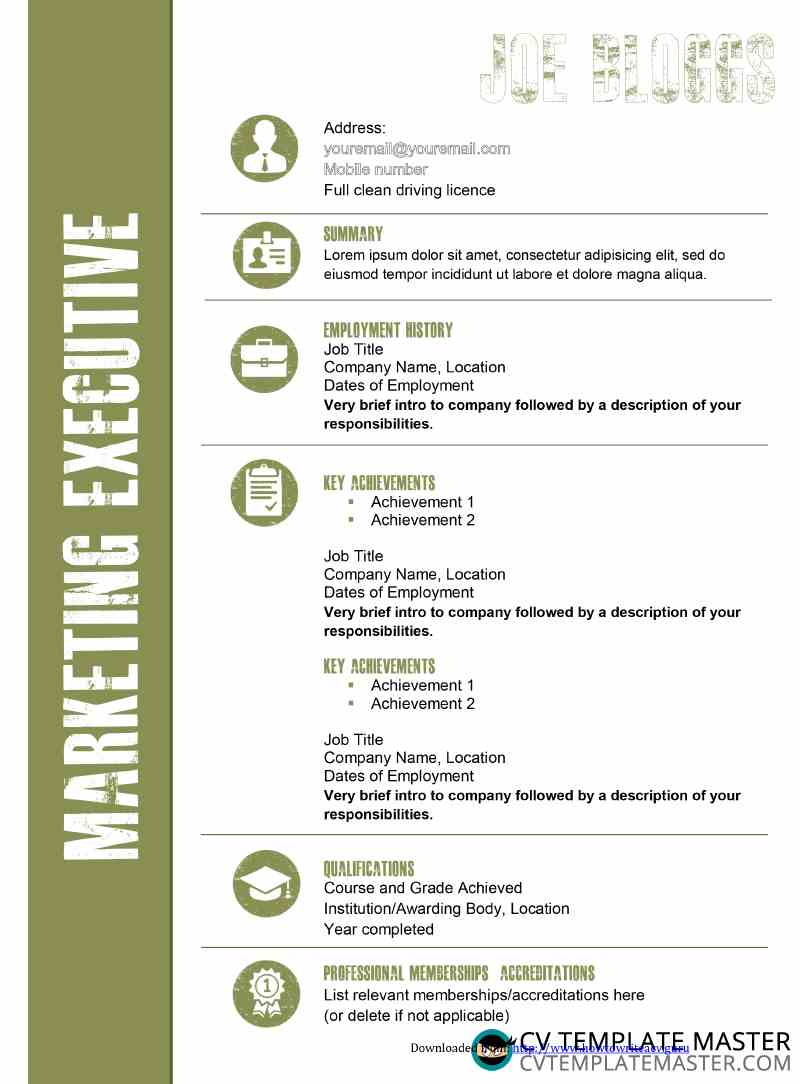Template details:

4 quick tips for CV success
So you’ve chosen the perfect CV template – now how do you make your application stand out? Here are 4 easy ways to maximise the chance of your CV finding its way to your recruiter’s shortlist:
First of all, make sure you really understand the job you’re going for and what’s expected of an employee. Especially if it’s a role you’ve never done before. For example, management is not the same as leadership – and employers look for different qualities in managers and team leaders.
Be careful not to assume that your fantastic knowledge of the role means you are ready for a manager’s position. The ability to manage requires a completely discrete set of skills from those that the team is performing. Read up on the job role and the qualities which are required before sending off your application.
Custom write your CV to the role
Carefully study the job specification before you start, paying close attention to what your recruiter is looking for. Often recruiters will divide adverts into two, with one set of requirements being mandatory, and the other being things they would like. Your task is to ensure that the recruiter can see you meet the mandatory requirements within a few seconds of looking at either your CV or your cover letter.
Tailoring your CV to each and every role you apply for is the key to success. It ensures you offer what they want and leave out what they don’t. Your CV is going to stand head and shoulders above your competition mainly because of this.
Include a personal statement
Write a ‘personal statement’ or ‘objective statement’ at the top of your CV. This should aim to set out who are, what you have to offer, and what you’re looking for. The ‘what you have to offer’ part should cover the recruiter’s most important mandatory requirements, such as a particular degree or level of experience.
A personal statement will act as an introduction to your CV, and make it clear to the reader exactly why you’re applying and what you have to offer. Although this section isn’t mandatory, you may not want to risk leaving it off.
Make your CV relevant
It can be tempting to write down every single qualification and every day of work experience you’ve ever completed. However, it will only dilute the most important information and make it more difficult to find.
Limit what you write about irrelevant positions or qualifications, and include more information about those that are relevant. If you’ve never had the exact same position as the role you’re applying for, pick out aspects of previous roles that are cross-transferable to the job.
Most employers will gladly accept a candidate that doesn’t have direct work experience. Your past performances are often more important to a hiring manager. Demonstrate your outstanding achievements, promotions, and other accolades. Show your proven track record and how those skills can be transferred to the new role with ease.
Include a cover letter
Write a focused cover letter introducing yourself and explaining exactly how you meet the job specification. A personal statement can be quite similar to a cover letter, so make sure you distinguish one from the other if you opt for both.
A personal statement is exactly that – personal. Whilst a cover letter can be a little more formal. If you choose to write both, go into more detail on your cover letter and write in a more personable tone on your statement.
For more information on cover letters, please read our guide on how to write a cover letter with examples here.